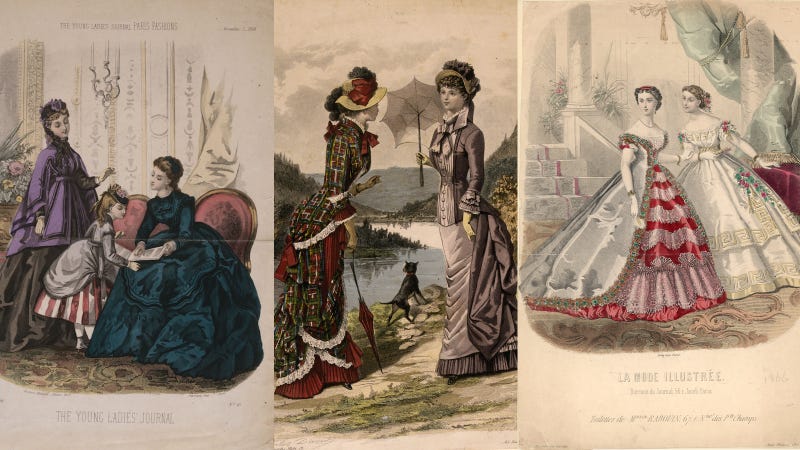
Fashion plates are a classic, even stereotypical angle image from the Victorian era, featuring duos and trios of women modeling the latest looks circa 1877. But how did consumers of the time actually use these images? What did you actually do with a fashion plate, anyway?Recently released in lavish paperback, Fashion Plates: 150 Years of Style is a beautiful chronicle of the form in its heyday. It’s the work of April Calahan, a fashion historian who works in special collections at New York’s Fashion Institute of Technology, whose holdings the book draws from. (Calahan explained they’ve got around 500 linear feet of materials, about 400 rare periodicals, and something like half a million original designer sketches.)Calahan opted for a vignette approach, rather than a straight-through history of the form sprinkled with illustrations. Each time you turn the page, you’re presented with a specific plate and bit of specific explanation or broader context. (Or both!) “I wanted it to flesh out all these other things that were happening at the same time, because without that context—a lot of people always feel that fashion is frivolous or unnecessary, but it’s really this thing that is at the core and woven into the fabric of our society,” she explained.She walked me through a brief history of the fashion plate, how it arose and became so ubiquitous, which turns out to provide a nice window on the history of fashion itself.
Comments
Post a Comment